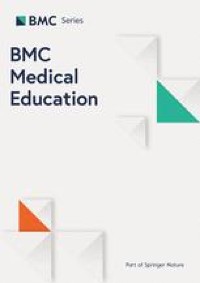With the recent news of ChatGPT artificial intelligence successfully passing the United States Medical Licensure Exam (USMLE), we have been catapulted into a new era in medicine and medical education. What has always been regarded exclusively as a human skill and profession has now been demonstrated to be technically mastered by artificial intelligence. Rightfully, the detractors today will say that passing a board exam does not make a physician and that if something can be accomplished through computer learning, it probably doesn’t have as much real meaning in the spectrum of human experience. But at what point will we concede that machine learning and its application in human interaction, like medicine, can replace a human interface? How soon will there come a point where human physicians become obsolete? What does that mean for medical education? What does that mean for the medical economy?
Concurrently, the rise of employee burnout seems to be endlessly identified, and many solutions have been proposed. In academic medicine, faculty burnout and declining medical student empathy create a perfect storm for a scenario that justifies eliminating or substantially reducing humanity from medicine and medical education. Given these confounding problems, it increasingly becomes meaningless to have human interaction in an encounter where being factually correct is the only valued outcome.
How the rise of machines ultimately affects the physician-patient encounter is yet to be played out fully. We will not know the future until the future arrives, but until then, competition for faculty, potential medical students, and residency slots will only increase. As medical school administrators and faculty, we must stand out and make our schools the best possible place for medical students to learn and thrive. If we are to lead artificial intelligence as opposed to the inverse, we must make ourselves invaluable as physicians to our future patients. The one trait that we uniquely possess is our humanity. We cannot make ourselves smarter than computers; we can only be more human. And it is only through the development of our humanity that we will thrive. Thirty-five years ago, I sat with a 55-year-old patient who was in the end stages of melanoma recurrence and brain metastasis. There were right answers, but mostly, my humanity was healing him on his journey into death.
The impact of technology on photography gives a glimpse into the near future of the interaction between artificial intelligence and humans in academic medicine. The creation of images through AI can rival the work of any photographer and can create equally believable and fantastical scenes. It is the human element of photography created by a living being that will transcend artificial intelligence. The capture of a living moment, the unspoken interaction between the person in front of and behind the camera, will make a difference and enhance the art form’s survival. The heartfelt passion that the photographer has for their subject that is indescribably communicated in the photo to the viewer will forever set the work apart from AI. Bringing one’s heart to the interaction will make a difference.
Some look at love as a wholly unnecessary addition to medical education. We have long studied the decline in empathy in medical students as they traverse their education. While solutions to that quandary have been studied, we have treated those solutions as ancillary niceties but not essential to the process of medical education. We have operated under the misconception that empathy is an expendable trait in the face of life or death. We have promoted the idea that this is serious business and soft human traits are secondary and unnecessary.
Things are different now. Only through our love and heart can we transcend academic medicine to a fully human endeavor. Bringing heart into medical education is the right thing to do, but it also makes sense. Medical schools face increasing competition for faculty and students as new schools open. We must stay nimble and support our faculty to innovate and create the best learning environment for our students. We need to support our students and unflinchingly recognize that they are the most important reason for our existence. They are the future of health care and, in many ways, the future of our community. Medical school is a tremendous sacrifice of time, energy, finances, and, most importantly, their life years of young adulthood. In the past, we have justified that sacrifice as delayed gratification. If they can weather the storm now, they can reap the rewards after. We cannot guarantee that anymore. Who knows what the future brings, what a future of artificial intelligence brings to medicine? We must shift our focus to the humanity of medical education. Our students and faculty are no longer expendable and are more than just a marketing angle. They are not cogs in our machine. They are integral to the process, and we must treat them with the value of an irreplaceable commodity, a rarefied mineral vital to our world.
We can only bring humanity out in people by bringing humanity to them. First and foremost, we must love our people: It is the most important thing we can bring to our faculty, students, and patients. We love our faculty by creating a supportive environment where we trust them and know that within them, they have the capacity to lead and, by leading, create a world where everyone thrives. Love begets love. By loving our people, we create a world where we support each other through changes: We live from compassion and empathy. We demonstrate love in all our interactions with each other, and effortlessly our environment becomes one of engagement, humor, trust, understanding, comradery, confidence, and support. We do not work toward faculty retention; it is an unspoken outcome. Recruitment is easy because the message of love is strong, and we have become the best workplace where everyone wants to be.
We need to love our students. Yes, they have milestones to meet in their medical education, and unfortunately, they are already coming from a world that commodifies them. They are not just potential scores or residency placements for us to use as marketing tools. They are humans, capable of loving and sharing kindness with their patients to build and nurture our future. As we interview our applicants, we must prioritize the most human ones. We should seek those that bring their hearts to the table and are fearless about their desire to live from the heart and love unflinchingly with kindness, compassion, empathy, and warmth. We must value those traits and engender them throughout the years of medical education. We can create a loving relationship with our students, both when they succeed and, more importantly, when they are unsuccessful. We can value cooperation over competition. We can value formative mastery over summative competence. We can value experiences in humanity, such as art, self-care, forgiveness, grace, awe, beauty, compassion, and service: Those are the things that make us uniquely human. We can bring them to those learning milestones with humanity and love.
By bringing humanity into medical education and academics from a faculty and student perspective and bringing love to the equation, we nurture something we uniquely possess as humans. Relationships, trust, empathy, and compassion do not stop at the workplace and should not stop at academic medicine. Rather, they bring richness to our lives and our work. Love positions us to love more, be better, lead ourselves and others, and be the people others strive to become. Love only makes us stronger, unique and secures our future.
Stevan Walkowski is an osteopathic physician.





